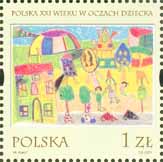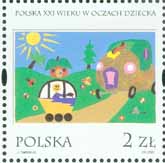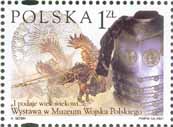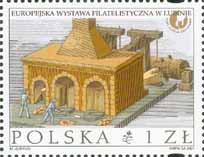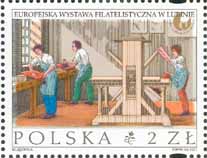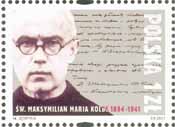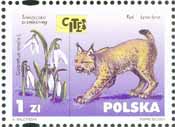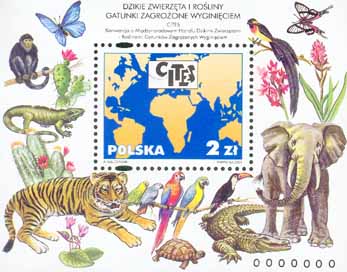Poland of the 21st century in the eyes of a child |
||||
|
||||
|
Last year, the Polish Post organized a nation-wide competition for children and adolescents from primary schools for a design of a postal stamp under the slogan "Poland of the 21st century in the eyes of a child". The competition was announced in the TV program "5-10-15" popular among children and adolescents. Before that, the children could have learned about how a stamp is made and many other interesting things about the fascinating hobby in a cycle of special programs. Over 14 thousand works were sent for the very popular competition. All of them will be transferred to the Museum of the Post and Telecommunication in Wrocław, where they will be exposed. The stamps represent awarded works by:
PLN 1.90 - Agata Grzyb from the Primary School no. 38 in Lublin PLN 2.00 - Joanna Sadrakuła from the plastic workshop of Małgorzata Duda from Gorzyce. On the day of introducing the stamps into the market, there will be sold a first day envelope (FDC) with a special date seal in the Post Office Warsaw 1. |
||||
